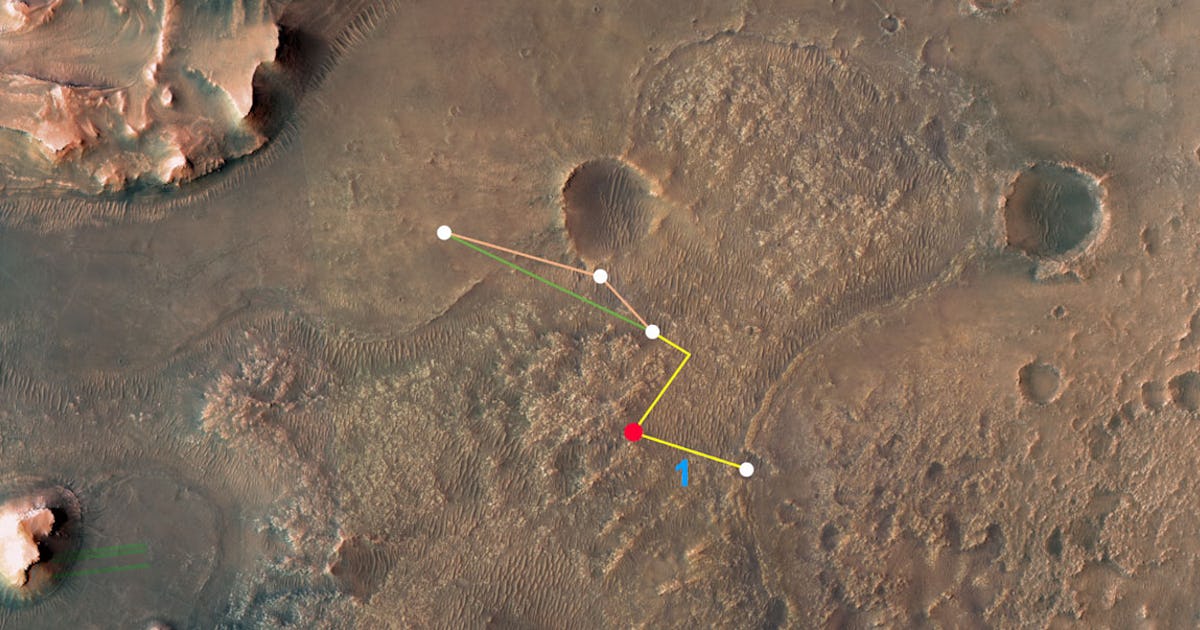
For more than a year, Mars has hosted a tiny landing pad for the planet’s very own helicopter. NASA’s Ingenuity helicopter is the first aircraft to operate on another world, and this Martian helicopter just received an extension to its historic mission.
NASA announced on March 15 that it will be extending flight operations for the Ingenuity Mars Helicopter through September, and the small rotorcraft will assist the Perseverance rover during its exploration of Martian terrain.
Ingenuity was originally designed to last for about 30 Martian sols (a sol on Mars, its equivalent of a day, is about 40 minutes longer than a day on Earth), but the helicopter just completed its 21st flight on Mars, nearly a year after its very first takeoff.
“This upcoming flight will be my 22nd entry in our logbook,” Håvard Grip, Ingenuity chief pilot at NASA’s Jet Propulsion Laboratory, said in a statement. “I remember thinking when this all started, we’d be lucky to have three entries and immensely fortunate to get five. Now, at the rate we’re going, I’m going to need a second book.”
The helicopter is only 19 inches tall, with two four-foot-long carbon-fiber rotors spinning in opposite directions. It traveled to Mars tucked inside the Perseverance rover’s belly.
On April 19, 2021, NASA’s Ingenuity helicopter lifted its scrawny legs 10 feet off the Martian ground. Its first flight only lasted 39.1 seconds, but it set the stage for a whole new way to explore another world.
Ingenuity’s first takeoff marked the first powered, controlled flight of an aircraft on another planet in all of space exploration history.
“Less than a year ago we didn’t even know if powered, controlled flight of an aircraft at Mars was possible,” Thomas Zurbuchen, the associate administrator of NASA’s Science Mission Directorate, said in a statement. “Now, we are looking forward to Ingenuity’s involvement in Perseverance’s second science campaign. Such a transformation of mindset in such a short period is simply amazing, and one of the most historic in the annals of air and space exploration.”
Since its first flight, Ingenuity has conducted a series of test flights.
The most recent one is the first of at least three needed for the helicopter to cross the northwest portion of a region known as Séítah to reach its next staging area, according to NASA. So far, Ingenuity has taken off from a relatively flat terrain. But the fan-shaped delta of Séítah is about 130 feet above a crater floor, and is marked with jagged cliffs, angled surfaces, boulders, and sand-filled pockets.
The helicopter will be assisting its longtime companion, the Perseverance rover. Once it reaches the delta, Ingenuity will advise Perseverance on which of two dry river channels it should take on as a route to get to the top of the delta.
Ingenuity will also beam down precious data that the mission team on the ground can use to identify potential targets to sample.
“The Jezero river delta campaign will be the biggest challenge the Ingenuity team faces since first flight at Mars,” Teddy Tzanetos, Ingenuity team lead at NASA’s Jet Propulsion Laboratory, said in a statement. “To enhance our chances of success, we have increased the size of our team and are making upgrades to our flight software geared toward improving operational flexibility and flight safety.”
In order to help it complete its next task, Ingenuity has undergone recent software updates. For example, Ingenuity’s software will now allow it to exceed the maximum altitude of 50 feet off the ground, as well as change airspeed while it’s flying.
So far, the rotorcraft has logged over 38 minutes in the air and traveled 2.9 miles. And with this new terrain ahead, Ingenuity is expected to add a lot more to its historic journey.